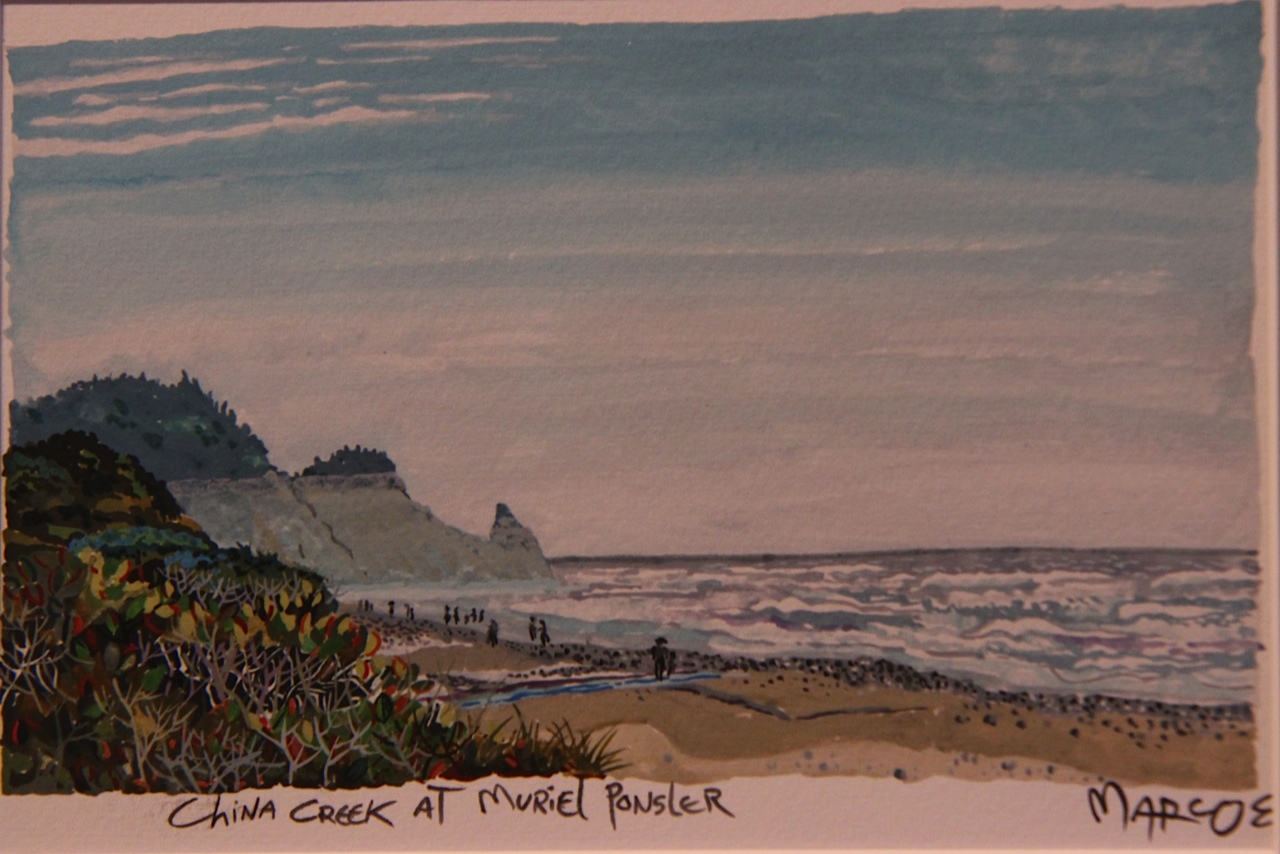(Above: A detail of “Rafter,” a long-scroll painting by Japanese artist Kono Bairei, now on display at the White Lotus Gallery)
By Randi Bjornstad
For hundreds of years, people in Japan have celebrated the arrival of each new season by rolling up one kakejiku — a long, delicate scroll painting on paper or silk — and carefully putting it away in its wooden box, then bringing out another to contemplate in its place.

A detail of a bamboo forest from a long-scroll painting; the art form frequently depicts scenes from nature
“In Japan, people often have an alcove called a tokonoma built into their homes specifically for that purpose, or to mark special occasions,” White Lotus Gallery spokeswoman Claudia Ponton said. “It is a tradition that is not limited to the wealthy, the way owning art is in many places. I think it’s a beautiful practice, very meditative and mindful of nature and the seasons.”
The practice of hanging long-scroll paintings probably originated in China as part of religious practice, with the artwork hanging over altars, she said, but in Japan the paintings quickly became popular in homes and public places such as tearooms where they helped create a meditative tone for the traditional tea ceremony.
A series of these scrolls, part of the White Lotus Gallery’s collection, is on display, including several by master scroll painters including 19th-century Kono Bairei, 20th-century artists Mori Getsujo and Sakakibara Shiko and Konoshima Okoku, who bridged the two.
White Lotus co-owner H.P. Lin has a particular interest in Japanese scroll paintings, Ponton said, “and she has been building the collection for many years.”
The exhibit, called “Art in Daily Life,” runs through April 1 and includes a wide variety of painting styles and themes.

The second panel in a Japanese scroll triptych represents the legendary, happily married elderly couple, Jou and Uba
One is a triptych based on the “Legend of Takasago,” depicting the life of a happy, long-married elderly couple called Jou and Uba. The legend is a popular one in Japanese culture, dating back hundreds of years and rendered not only in paintings but in embroidery, glass, drama and many other art forms.
The story begins with a priest who arrives in the village of Takasago in beautiful spring weather and encounters an elderly couple who come at the toll of a bell to sweep the area underneath two intertwined Takaago and Sumioe pine trees. Eventually they reveal to the priest that they are in fact the spirits of the pines and that the intertwined trees symbolize the ideal love and faithfulness of matrimony.

The last scroll in the triptych now on display at the White Lotus Gallery shows cranes, the Japanese symbol of long life and good fortune
The parts of the triptych in “Art in Daily Life” show the pine trees, a portrait of the elderly couple and a flock of cranes, which in Japan symbolize longevity and good fortune.
White Lotus Gallery
Where: 767 Willamette St. in downtown Eugene
Hours: 10 a.m. to 5:30 p.m., Tuesday through Saturday
Information: 541-345-3276, lin@wlotus.com or wlotus.com












